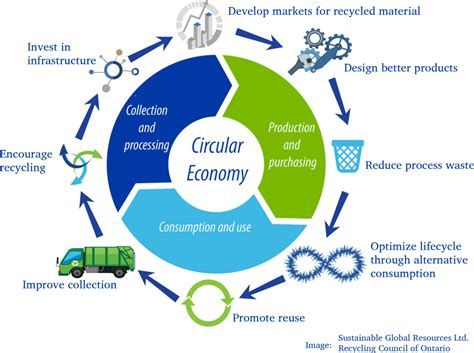In today’s fast-paced world, the issue of waste management has become a critical concern. With the increase in population and consumption, the amount of waste generated has also grown exponentially. This has led to environmental degradation, resource depletion, and a host of other negative impacts on our planet.
What is Circular Economy?
Circular economy is a concept that aims to reduce waste by designing products and systems that maximize their lifecycle and value. Instead of the traditional linear economy model, where products are made, used, and disposed of, circular economy focuses on keeping materials and products in use for as long as possible through recycling, remanufacturing, and reuse.
The Role of Innovative Technologies in Circular Economy
Technology plays a crucial role in helping us transition to a circular economy. From advanced recycling techniques to innovative product design, technology has the power to transform how we produce, consume, and manage waste. Here are some of the key technologies driving the shift towards a more sustainable and circular economy:
1. Advanced Recycling Technologies
Advanced recycling technologies, such as chemical recycling and pyrolysis, have the potential to revolutionize the way we manage plastic waste. These processes can break down plastics into their original building blocks, allowing them to be used as raw materials for new products. By closing the loop on plastic waste, these technologies can reduce the reliance on virgin materials and mitigate the environmental impact of plastic pollution.
2. Internet of Things (IoT) and Smart Sensors
IoT and smart sensors are enabling the implementation of smart waste management systems that can optimize collection routes, monitor waste levels in real-time, and improve recycling rates. By providing valuable data insights, these technologies help businesses and municipalities make informed decisions to reduce waste generation and increase resource efficiency.
3. Artificial Intelligence (AI) and Machine Learning
AI and machine learning algorithms are being used to optimize production processes, predict consumer behavior, and streamline supply chains. By identifying patterns and trends from vast amounts of data, AI can help businesses design more sustainable products, reduce waste in manufacturing, and improve resource utilization.
The Benefits of Embracing Circular Economy Principles
Embracing circular economy principles not only helps reduce waste and alleviate environmental pressure but also brings about a host of economic and social benefits. Some of the key benefits include:
Resource conservation and efficiency
Cost savings through waste reduction and reuse
Innovation and job creation in the green economy
Improved brand reputation and customer loyalty
Reduced carbon footprint and greenhouse gas emissions
Conclusion
In conclusion, the adoption of circular economy principles and innovative technologies is essential in addressing the growing challenges of waste management and sustainability. By transitioning to a circular economy model, we can unlock new opportunities for economic growth, environmental protection, and social advancement. It is imperative for businesses, governments, and individuals to work together towards building a more sustainable future for generations to come.
